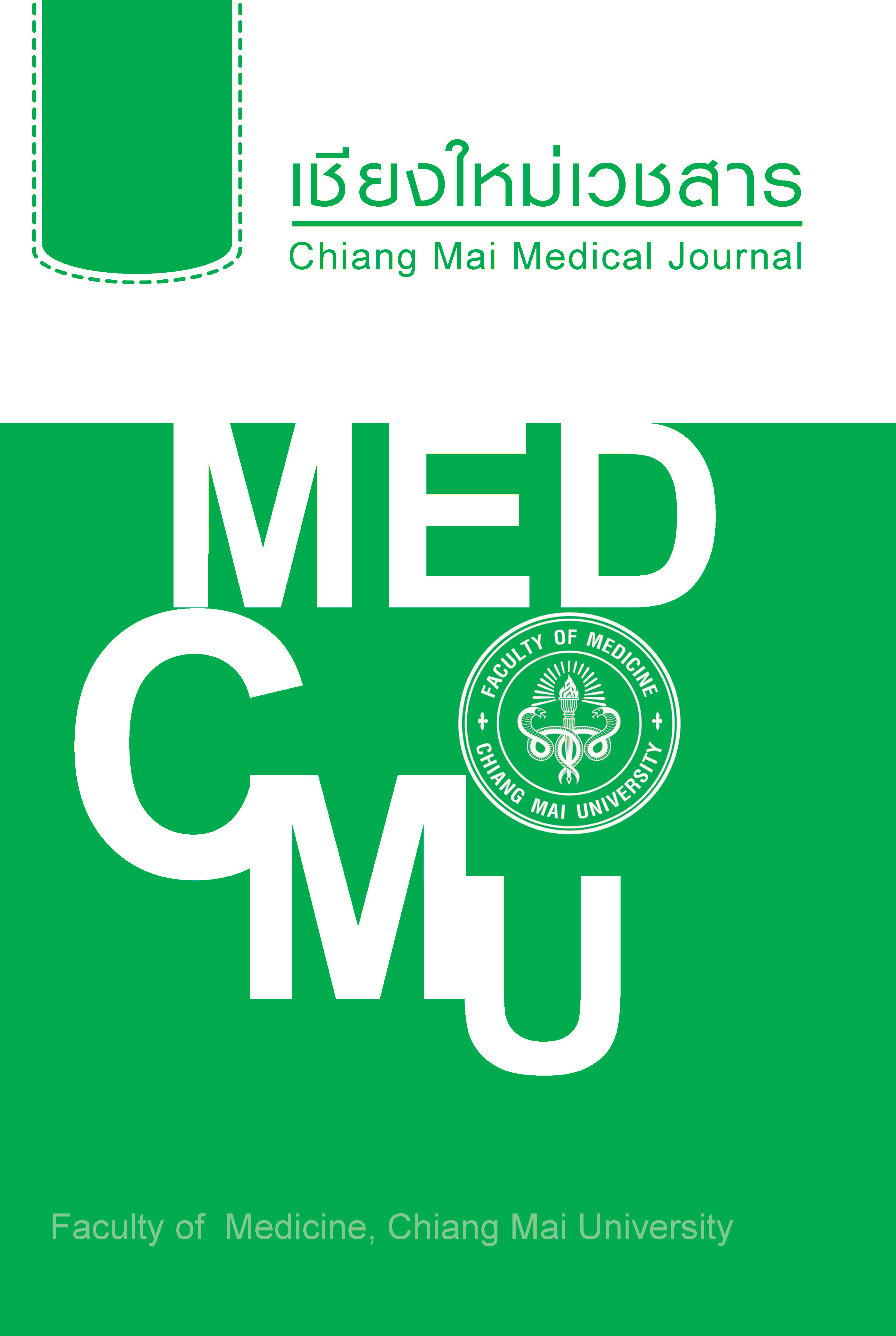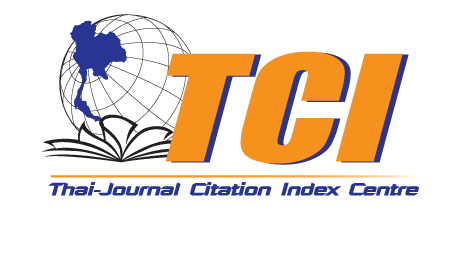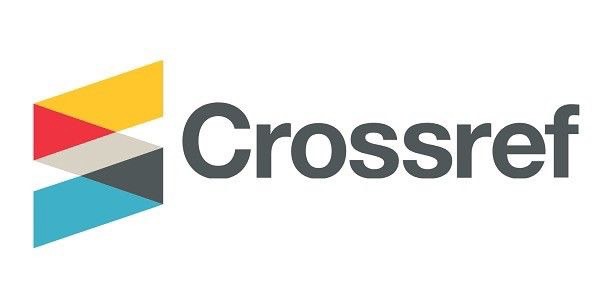Red jasmine rice extract suppresses genes associated with cartilage degradation in IL-1β-stimulated chondrosarcoma (SW1353) via blocking NF-κB pathway
Keywords:
red jasmine rice crude extract, cartilage degradationAbstract
Objective This study aimed to evaluate the chondroprotective potential of red jasmine rice crude extract (RRE) against an expression of genes associated with cartilage degradation stimulated by IL-1β in a human chondrosarcoma cell line, SW1353, culture model.
Methods SW1353 cells were pre-incubated with 1 ng/mL of recombinant human interleukin-1β (IL-1β) followed by the addition of RRE in a range of concentrations from of 0 to 100 µg/mL. After 24 hours of incubation, cells were harvested and expression of genes associated with cartilage degradation was measured using real-time RT-PCR. The culture media were evaluated for MMP-13 levels using an ELISA kit. Upregulation of the signaling pathway which promotes the inflammatory cascade, nuclear factor kappa B (NF-κB), was determined by Western blot analysis.
Results Cytokine IL-1β significantly upregulated the expression of the proinflammatory mediators IL-1β, IL-6, TNF-α, and COX-2 as well as enzymes involved in osteoarthritis such as MMP-13, ADAMTS-4, and ZIP-8. The results showed that RRE at a concentration of 100 µg/mL significantly suppressed IL-1β-induced expression of these genes. Moreover, the effect of IL-1β on NF-κB signaling pathway activation was suppressed by RRE via decreased phosphorylated form of IKKα/β, IκBα, and NF-κB p65.
Conclusion RRE has chondroprotective potential through reduction of the gene upregulating
effect of IL-1β which involve cartilage degradation via suppression of the NF-κB signaling pathway.
Development of RRE has for alternative use potential in treating degenerative joint diseases.
References
2. Tangyuenyong S, Viriyakhasem N, Peansukmanee S, Kongtawelert P, Ongchai S. Andrographolide exerts chondroprotective activity in equine cartilage explant and suppresses interleukin-1 beta -induced MMP-2 expression in equine chondrocyte culture. Int Sch Res Notices. 2014;29:2014:464136.
3. Aggarwal BB. Nuclear factor-kappaB: the enemy within. Cancer Cell. 2004;6:203-8.
4. Kapoor M, Martel-Pelletier J, Lajeunesse D, Pelletier JP, Fahmi H. Role of proinflammatory cytokines in the pathophysiology of osteoarthritis. Nat Rev Rheumatol. 2011;7:33-42.
5. Pozgan U, Caglic D, Rozman B, Nagase H, Turk V, Turk B. Expression and activity profiling of selected cysteine cathepsins and matrix metalloproteinases in synovial fluids from patients with rheumatoid arthritis and osteoarthritis. Biol Chem. 2010;391:571-9.
6. Gosset M, Pigenet A, Salvat C, Berenbaum F, Jacques C. Inhibition of matrix metalloproteinase-3 and -13 synthesis induced by IL-1beta in chondrocytes from mice lacking microsomal prostaglandin E synthase-1. J Immunol. 2010;185: 6244-52.
7. Tang BL. ADAMTS: a novel family of extracellular matrix proteases. Int J Biochem Cell Biol. 2001;33:33-44.
8. Kim JH, Jeon J, Shin M, Won Y, Lee M, Kwak JS, et al. Regulation of the catabolic cascade in osteoarthritis by the zinc-ZIP8-MTF1 axis. Cell. 2014; 156:730-43.
9. Sinusas K. Osteoarthritis: diagnosis and treatment. Am Fam Physician. 2012;85:49-56.
10. Towheed TE, Maxwell L, Judd MG, Catton M, Hochberg MC, Wells G. Acetaminophen for osteoarthritis. Cochrane Database Syst Rev. 2005;25: CD004257.
11. Zhao J, Liu T, Xu F, You S, Xu F, Li C, et al. Anti-arthritic Effects of Total Flavonoids from Juniperus sabina on Complete Freund’s Adjuvant Induced Arthritis in Rats. Pharmacogn Mag. 2016;12:178-83.
12. Wang S, Wang Y, Liu X, Guan L, Yu L, Zhang X. Anti-inflammatory and anti-arthritic effects of taraxasterol on adjuvant-induced arthritis in rats. J Ethnopharmacol. 2016;187:42-8.
13. Laokuldilok T, Shoemaker CF, Jongkaew wattana S, Tulyathan V. Antioxidants and antioxidant activity of several pigmented rice brans. J Agric Food Chem. 2011;59:193-9.
14. Muntana N, Prasong S. Study on total phenolic contents and their antioxidant activities of Thai white, red and black rice bran extracts. Pak J Biol Sci. 2010;13:170-4.
15. Goufo P, Trindade H. Rice antioxidants: phenolic acids, flavonoids, anthocyanins, proanthocyanidins, tocopherols, tocotrienols, gamma-oryzanol, and phytic acid. Food Sci Nutr. 2014;2:75-104.
16. Li WG, Zhang XY, Wu YJ, Tian X. Anti-inflammatory effect and mechanism of proanthocyanidins from grape seeds. Acta Pharmacol Sin. 2001;22: 1117-20.
17. Woo YJ, Joo YB, Jung YO, Ju JH, Cho ML, Oh HJ,
et al. Grape seed proanthocyanidin extract ameliorates monosodium iodoacetate-induced osteoarthritis. Exp Mol Med. 2011;43:561-70.
18. Pintha K, Yodkeeree S, Pitchakarn P, Limtrakul P. Anti-invasive activity against cancer cells of phytochemicals in red jasmine rice (Oryza sativa L.). Asian Pac J Cancer Prev. 2014;15:4601-7.
19. Pintha K, Yodkeeree S, Limtrakul P. Proanthocyanidin in red rice inhibits MDA-MB-231 breast cancer cell invasion via the expression control of invasive proteins. Biol Pharm Bull. 2015;38:571-81.
20. Bondeson J, Wainwright SD, Lauder S, Amos N, Hughes CE. The role of synovial macrophages and macrophage-produced cytokines in driving aggrecanases, matrix metalloproteinases, and other destructive and inflammatory responses in osteoarthritis. Arthritis Res Ther. 2006;8:R187.
21. Jiang Z, Uboh CE, Chen J, Soma LR. Isolation of RNA from equine peripheral blood cells: comparison of methods. Springerplus. 2013;2:478.
22. Fleige S, Pfaffl MW. RNA integrity and the effect on the real-time qRT-PCR performance. Mol Aspects Med. 2006;27:126-39.
23. Al-Shanti N, Saini A, Stewart CE. Two-Step versus One-Step RNA-to-CT 2-Step and One-Step RNA-to-CT 1-Step: validity, sensitivity, and efficiency. J Biomol Tech. 2009;20:172-9.
24. Aigner T, Soeder S, Haag J. IL-1beta and BMPs--interactive players of cartilage matrix degradation and regeneration. Eur Cell Mater. 2006;12:49-56.
25. Chaiwongsa R, Ongchai S, Boonsing P, Kongtawelert P, Panthong A, Reutrakul V. Active compound of Zingiber cassumunar Roxb. down-regulates the expression of genes involved in joint erosion in a human synovial fibroblast cell line. Afr J Tradit Complement Altern Med. 2012;10:40-8.
26. Henrotin YE, De Groote DD, Labasse AH, Gaspar SE, Zheng SX, Geenen VG, et al. Effects of exogenous IL-1 beta, TNF alpha, IL-6, IL-8 and LIF on cytokine production by human articular chondrocytes. Osteoarthritis and cartilage / OARS, Osteoarthritis Cartilage. 1996;4:163-73.
27. Hardy MM, Seibert K, Manning PT, Currie MG, Woerner BM, Edwards D, et al. Cyclooxygenase 2-dependent prostaglandin E2 modulates cartilage proteoglycan degradation in human osteoarthritis explants. Arthritis Rheumatol. 2002; 46:1789-803.
28. Ziskoven C, Jager M, Zilkens C, Bloch W, Brixius K, Krauspe R. Oxidative stress in secondary osteoarthritis: from cartilage destruction to clinical presentation? Orthop Rev (Pavia). 2010;2:e23.
29. Gebauer M, Saas J, Sohler F, Haag J, Soder S, Pieper M, et al. Comparison of the chondrosarcoma cell line SW1353 with primary human adult articular chondrocytes with regard to their gene expression profile and reactivity to IL-1beta. Osteoarthritis and cartilage / OARS, Osteoarthritis Cartilage. 2005;13:697-708.
30. Tew SR, Clegg PD, Brew CJ, Redmond CM, Hardingham TE. SOX9 transduction of a human chondrocytic cell line identifies novel genes regulated in primary human chondrocytes and in osteoarthritis. Arthritis Res Ther. 2007;9: R107.
31. Liacini A, Sylvester J, Li WQ, Zafarullah M. Mithramycin downregulates proinflammatory cytokine-induced matrix metalloproteinase gene expression in articular chondrocytes. Arthritis Res Ther. 2005;7:R777-83.
32. Ruangsuriya J, Budprom P, Viriyakhasem N, Kongdang P, Chokchaitaweesuk C, Sirikaew N, et al. Suppression of Cartilage Degradation by Zingerone Involving the p38 and JNK MAPK Signaling Pathway. Planta Med. 2017; 83(3-04): 268-76.
33. Lee J, Rhee MH, Kim E, Cho JY. BAY 11-7082 is a broad-spectrum inhibitor with anti-inflammatory activity against multiple targets. Mediators Inflamm. 2012; 2012:416036.
34. Mendes Sdos S, Candi A, Vansteenbrugge M, Pignon MR, Bult H, Boudjeltia KZ, et al. Microarray analyses of the effects of NF-kappaB or PI3K pathway inhibitors on the LPS-induced gene expression profile in RAW264.7 cells: synergistic effects of rapamycin on LPS-induced MMP9-overexpression. Cell Signal. 2009;21:1109-22.
35. Juliano C, Cossu M, Alamanni MC, Piu L. Antioxidant activity of gamma-oryzanol: mechanism of action and its effect on oxidative stability of pharmaceutical oils. Int J Pharm. 2005;299:146-54.
36. Panchal SS, Patidar RK, Jha AB, Allam AA, Ajarem J, Butani SB. Anti-Inflammatory and Antioxidative Stress Effects of Oryzanol in Glaucomatous Rabbits. J Ophthalmol. 2017;2017:1468716.
37. Ahmad R, Sylvester J, Ahmad M, Zafarullah M. Adaptor proteins and Ras synergistically regulate IL-1-induced ADAMTS-4 expression in human chondrocytes. J Immunol. 2009;182:5081-7.
38. Torzilli PA, Bhargava M, Chen CT. Mechanical Loading of Articular Cartilage Reduces IL-1-Induced Enzyme Expression. Cartilage. 2011;2: 364-73.
39. Estrov Z, Talpaz M. Role of interleukin-1 beta converting enzyme (ICE) in acute myelogenous leukemia cell proliferation and programmed cell death. Leuk Lymphoma. 1997;24:379-91.
40. Ahmad SF, Zoheir KM, Abdel-Hamied HE, Ashour AE, Bakheet SA, Attia SM, et al. Grape seed proanthocyanidin extract has potent anti-arthritic effects on collagen-induced arthritis by modifying the T cell balance. Int Immunopharmacol. 2013; 17:79-87.
41. Montaseri A, Busch F, Mobasheri A, Buhrmann C, Aldinger C, Rad JS, et al. IGF-1 and PDGF-bb suppress IL-1beta-induced cartilage degradation through down-regulation of NF-kappaB signaling: involvement of Src/PI-3K/AKT pathway. PloS One. 2011;6(12):e28663.
42. Marcu KB, Otero M, Olivotto E, Borzi RM, Goldring MB. NF-kappaB signaling: multiple angles to target OA. Curr Drug Targets. 2010;11:599-613.
43. Goldring MB. Chondrogenesis, chondrocyte differentiation, and articular cartilage metabolism in health and osteoarthritis. Ther Adv Musculoskelet Dis. 2012;4:269-85.
44. Limtrakul P, Yodkeeree S, Pitchakarn P, Punfa W. Anti-inflammatory effects of proanthocyanidin-rich red rice extract via suppression of MAPK, AP-1 and NF-kappaB pathways in Raw 264.7 macro-phages. Nutr Res Pract. 2016;10:251-8.
Downloads
Published
How to Cite
Issue
Section
License

This work is licensed under a Creative Commons Attribution-NonCommercial-NoDerivatives 4.0 International License.








